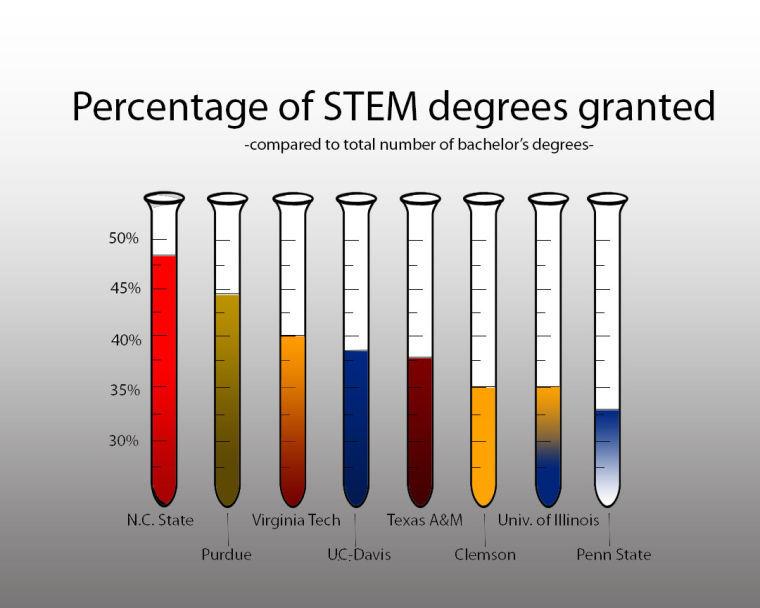
N.C. State is in the spotlight after a new national ranking recognized it as a top institution in science, technology, engineering and math education.
U.S. News & World Report reported that N.C. State was the highest-ranked public land-grant institution among top national colleges and universities that award substantial numbers of bachelor’s degrees in the STEM fields.
The new list of the nation’s top STEM schools was published June 18 in conjunction with U.S. News’ STEM Solutions conference.
Schools on the list ranked in the top half of the 2013 Best Colleges list, which included 281 national colleges and universities, and awarded a third or more of their undergraduate degrees in STEM fields throughout the 2011-2012 academic year. Only 39 institutions of the Best Colleges group made the cut to be on the list.
Last year 48 percent of the bachelor’s degrees awarded at N.C. State were in a STEM field, placing it 17th overall and seventh among public universities. It was the highest-ranked public land-grant institution on the list.
Dean Daniel Solomon, head of the new College of Sciences, said STEM students at N.C. State get the opportunity to be among other highly motivated students while to engaging in hands-on, cutting-edge research.
Emily Van Schagen, a junior in human biology, said she decided N.C. State was the right school for her because it was known for its science programs and competitive environment.
“I feel pretty confident getting a degree from State,” Van Schagen said. “I guess I saw it was a good school, you know. I knew it had a competitive science program, and I wanted to go somewhere that would be challenging.”
Solomon said the University’s reputation as a major school in the UNC System gives the school more credibility nationally.
“We attract STEM undergraduates because students recognize that N.C. State is the science and engineering flagship of the UNC system,” Solomon said.
The creation of the College of Sciences itself illustrates the initiatives being taken at N.C. State to increase innovation within STEM fields and prepare students for the real world, Solomon said.
The new college is a merger of the colleges of Physical Science and Mathematics. The College of Sciences officially launched this month and is now home to the physical and chemical sciences, the mathematical and statistical sciences, the biological sciences, and the earth system sciences.
According to Solomon, as science becomes more interdisciplinary, so must the curricula used to prepare students. This interdisciplinary approach is referred to as the “convergence” of the sciences.
“The creation of a broad College of Sciences will facilitate that kind of interdisciplinary research,” said Solomon. “Many of the great problems facing society – for example in health, in energy, in environmental sustainability – are going to be solved at the interfaces among the physical, mathematical, biological and engineering sciences.”
The new college allows scientific research and mathematical analysis to work more closely together, which will benefit areas such a genetics, nanotechnology and environmental science.
“The College of Sciences is, of course, less than two weeks old, but the programs that have come together in its formation produce 100 percent STEM graduates and will continue to do so,” said Solomon. “The faculty of the College of Sciences provides a massive amount of core instruction in our disciplines to literally every undergraduate in the University, regardless of major, as well as many graduate students.”